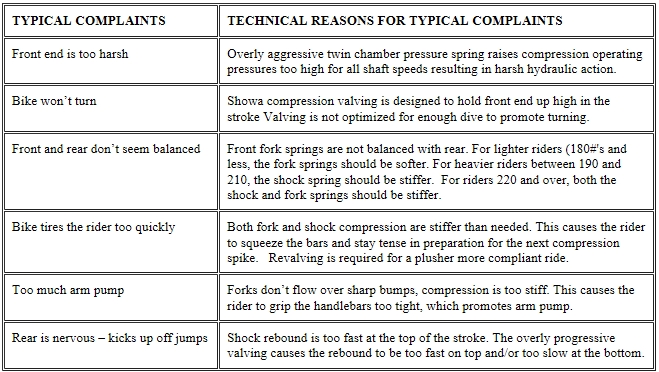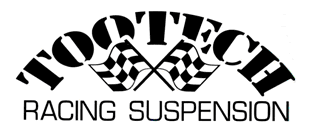2015-16 CRF450R and Earlier Model Review
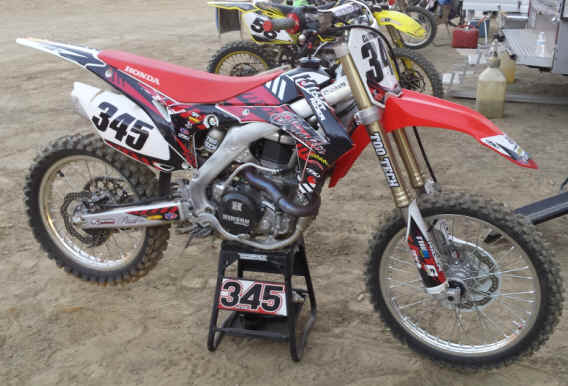
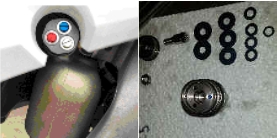
A review of 2015 - 2016 Rear Shock suspension changes:
This is the first dirt bike shock that moves the Rebound Adjuster from the shock shaft to the Shock Reservoir. Technically this change is hugely different and even risky. Historically rebound adjustment is done by adjusting screw on the lower shaft clevis which advances a cam which moves an aluminum rod that opens and closes an orifice in the main shock piston. As the orifice is closed, the 'free' oil flow path through the hole is closed which forces the oil to flow through the piston. The increased flow resistance creates a larger pressure differential across the piston. The result of the pressure differential is a force. This force opposes the shaft motion which slows the motion. We call this a rebound 'damping' force. NOTE: one of the little know features of this design is the aluminum rod inside the steel shock shaft. As the shock heats up, the aluminum rod expands faster than the steel shaft. This causes the rebound orifice to close as the shock heats up. This reduction in oil free flow helps to offset the effect of the hot oil becoming thinner. The end result is as the oil thins from heat, it is offset by a smaller bleed orifice and overall shock damping remains relatively constant.
The new Honda design does not adjust an orifice at the main shock piston for rebound changes. Instead the new adjuster assembly in the reservoir restricts the flow of oil back into the shock during the rebound stroke. By restricting the return flow of oil to the shock body, the oil pressure above the shock piston can be either increased or decreased. Thus the pressure differential across the piston can be increased or decreased which creates either more or less force resistance during the rebound stroke. This is clearly a novel approach to rebound damping adjustment. But I'm not sure that it offers an automatic orifice change as the oil heats up and thins out. Additionally the adjustment range may be less than what we had in the conventional shock piston orifice design. I will report back when I figure it out.
WITH ADDED TIME TESTING, I FIRMLY BELIEVE A NEW SHOCK SHAFT WITH INTEGRAL REBOUND ADJUSTER FROM A 2014 MODEL WILL DELIVER BETTER ADJUSTMENT and LESS REBOUND FADE. WE STOCK THIS SHAFT......
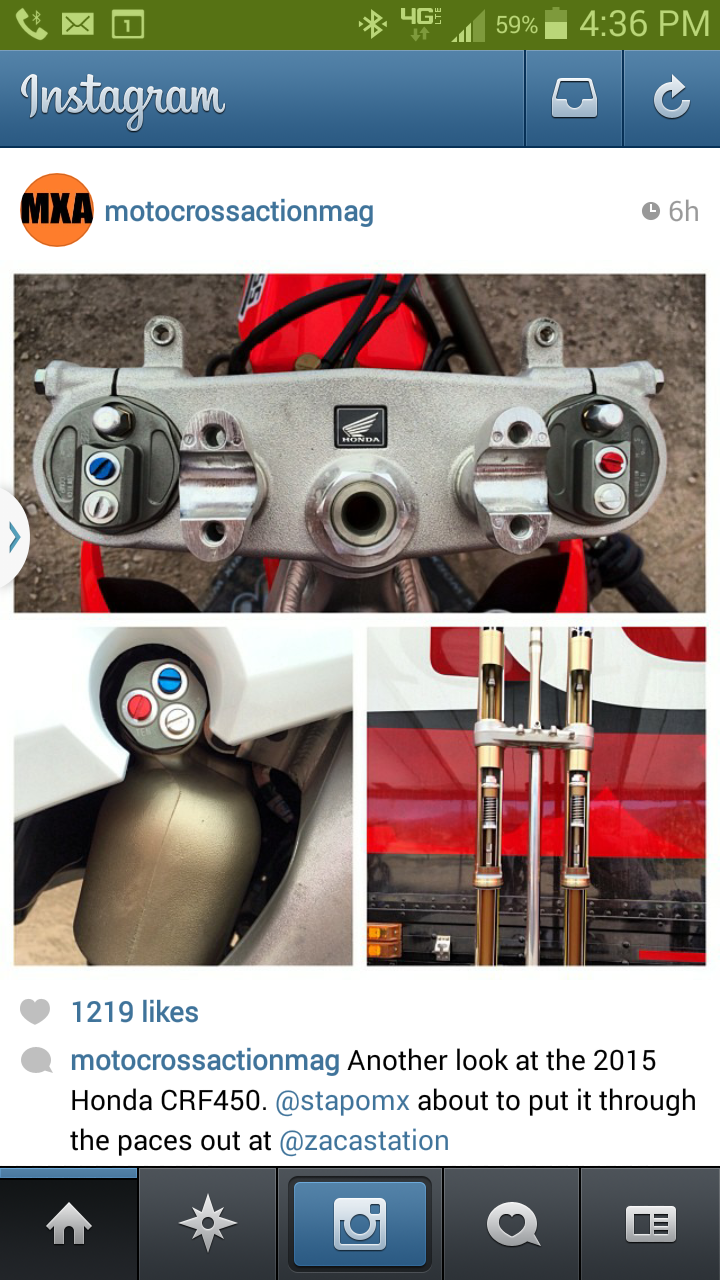
A review of the 2015 - 2016 PS2 Fork suspension changes:
The fork is now a 'single chamber' air fork with a balance spring (No Twin Chamber). The compression and rebound changes have been moved to the top of the forks. The internal damping is the same inside each fork, but internal flow circuit changes cause one fork to adjust rebound while the other fork adjusts compression damping.
- The beauty of these forks is there is only one air pressure adjustment. Additionally this design builds up less pressure during a moto and doesn't affect late moto internal pressure rise as much as the 2013-2014.
- The shortcoming is the single air chamber pressurizes the entire fork. If air pressure is lost the fork looses its ability to hold up the bike. As a secondary issue, the high pressure pushes the oil seal lips into the chrome tube creating stiction in the fork action. Additionally the array of adjustments gets confusing....
Testing: Our initial testing in October at Piru mx track illustrated performance issues and a severe shortcomings in the new shock.
The shock has excess compression damping which is common in many of the modern MX suspensions. The symptoms of excess compression damping are great bottoming resistance, but the faster you ride the harsher the suspension feels. And the sharper the bumps, the less likely the rear wheel is to move fast enough to absorb the bump. This harshness is most likely to be noticed in high speed sharp edged stutter bumps that develop as the track develops and deteriorates. Too Tech has proprietary valving strategies that allow the suspension to 'blow off' on sharp edges while still having enough low speed damping for jump landings. We also ensure that the compression adjusters have enough range to adjust to soak up the Glen Helen downhill's or hit the large jumps at Milestone or Competitive Edge.
On the rebound side of the shock performance, the testers/engineers 'simply failed to install enough rebound damping' in the shock. This omission was compounded by the new rebound adjusting concept which lacks the adjustment range of the conventional rebound adjuster concept. The lack of rebound damping is noticed in most rebound conditions. On jump landings the bike actually kicks sideways after almost any jump landing. The solution is actually quite simple and is accomplished by adding rebound damping. Our internal valving changes cause the adjuster to be positioned in the middle of the adjustment range. We do recommend using a 2014 shaft with integral rebound adjuster if budget allows.
As of November 10 we have had an opportunity to work on several 2015 CRF450R's with great success. While testing with the first customer who runs in the local Pro class, we offered to fine tune his revalve at our test track. His response was, "Don't touch it, it's perfect. I'll let you know if I need anything". (we haven't hard from him since.....)
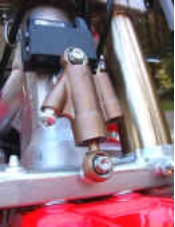
- Front end rides high in the stroke, won’t dive into a corner, and feels harsh in square edges. Symptoms include jolts to your hands, arms, and shoulders along with difficulty initiating tight turns.
- Rear end deflects when accelerating hard through acceleration bumps. Tends to get knocked off course at high speeds or when slowing in braking bumps. Symptoms include being deflected off course when aiming for a rut or accelerating for a double jump. Trail riders will notice harshness and deflection when hitting rocks or tree roots.
- Because the bike is small and light, many riders are happy with the handling and do not realize how much better the suspension could perform.
- In the rolling bumps, big jumps, and well groomed tracks the bike should feel OK. Problems are accentuated by rough terrain.
Situation & Solution
General CRF450 Riding Impressions for riders weighing between 160 to 180 pounds
- Front end rides high in the stroke and feels harsh in square edges. Tends to get knocked off course when trying to hit a precise line. Rider will tire out quickly. Symptoms include jolts to your hands, arms, and shoulders along with difficulty initiating tight turns.
- Rear end deflects when accelerating hard through acceleration bumps. (This becomes more noticeable after fixing the front end) Symptoms include being deflected off course when aiming for a rut or accelerating for a double jump. Trail riders will notice harshness and deflection when hitting rocks or tree roots. Many riders think their shock is real good, but they do not realize how much the rear is affecting the performance of the bikes front ends.
- In the rolling bumps, big jumps, and well groomed tracks the bike should feel OK. Problems are accentuated by rough terrain.
2003 CRF450R
The 2003 CR 450 suspension is improved over the 2002 model. The shock action is very similar to the 02 except the initial ride height of the rear is taller. This taller ride height keeps the rear up higher in the stroke and makes it turn better and feel like it has a stiffer shock spring in the rear. By the way the shock spring rate is not stiffer this year like the magazines say. It is the same as the 02 and equals about 5.3 kg/mm. (Note: For 2002 models we have been lengthening the shock shaft all along.)
The 2003 CR 450 forks have dramatically different compression valving than the 2002. For faster riders it is too soft and tends to blow through the travel on jump take offs and landings (low shaft speed valving). At the same time the forks will feel stiff on sharp edges (high speed valving).
The shock characteristics are similar to the front but not as pronounced. The compression valving will make the bike wallow and feel soft (low shaft speed valving) in the rollers and feel stiff for many riders in the high speed chop exiting turns. Shock rebound is too fast at the top of the stroke and/or too slow at the bottom. If the rebound is adjusted properly to control rebound from full compression, the rear will pack and feel harsh in many parts of the track. If the rear is sped up to follow the terrain and not pack, it will kick out sideways when you least expect it, especially on down hills.
The interesting thing about the 03 is that many riders are confused because it bottoms in some sections but will feel harsh in others. This classic complaint comes from a suspension which is too progressive. (Not enough damping at slow shaft speeds and too much damping at high speeds.)
21 years of experience and twice weekly riding sessions provide the experience to successfully revalve this excellent bike.
Call me to discuss your particular complaints!
